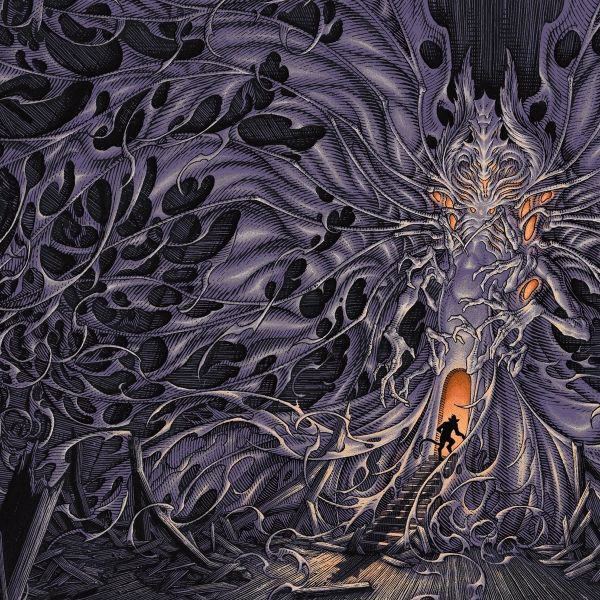
Houston MTG's Duskmourn: Mechanics Breakdown
The much-anticipated release of Duskmourn is just around the corner, bringing a fresh wave of excitement to the Houston MTG community. This new set is poised to add a unique twist to the game by introducing new mechanics while also reimagining familiar ones. Whether you're a long-time Magic: The Gathering enthusiast or a newcomer to Houston tabletop games, understanding these mechanics is key to gaining an advantage in drafting and building competitive decks. Let’s break down the mechanics, notable cards that feature them, and how they synergize to create a dynamic gameplay experience.
Understanding the Mechanics of Houston MTG Duskmourn
Duskmourn offers a blend of brand-new mechanics, as well as a reintroduction of fan favorites that align with the set's mysterious and haunting themes. These mechanics promise to bring both complexity and excitement to the game. Here are the most notable mechanics in the set:
Soulbind
A key mechanic in Duskmourn, Soulbind allows you to link two creatures together on the battlefield. This bond grants mutual benefits to both creatures as long as they remain linked. It introduces a strategic layer that forces players to think about which creatures can complement each other’s abilities for maximum effectiveness. Soulbind is particularly useful for decks that thrive on synergy between creatures. The ability to link two creatures together can create powerful board states, especially when both creatures benefit from keyword abilities such as flying, lifelink, or first strike. Decks that rely on a strong creature presence and buffs will likely benefit the most from this mechanic.
Eclipse
Eclipse triggers abilities only during specific game phases, primarily during your opponent’s turn. These phase-locked abilities give players a new tactical challenge, requiring them to plan their turns carefully while also anticipating their opponent's actions. Eclipse adds a layer of reactive play. With abilities that only trigger during specific phases, Eclipse encourages players to hold back their spells and resources until the most opportune moment. This mechanic will shine in control decks, where timing and patience are key to outmaneuvering your opponent.
Haunt
Making its return from older Houston MTG sets, Haunt continues to be a game-changing mechanic in Duskmourn. Creatures or spells with Haunt can "attach" themselves to other creatures or players, creating lingering effects even after the original card has been removed from the battlefield. Haunt, as always, rewards careful planning and resource management. The fact that the card continues to affect the game even after it’s been "removed" adds long-lasting pressure on your opponent. It’s perfect for attrition-style decks that aim to grind out value over time, as well as aggressive decks that want to keep the pressure on.
Notable Houston MTG Cards with Duskmourn Mechanics
Several cards in Duskmourn make excellent use of these mechanics, and they’re expected to become staples in both Limited and Constructed formats:
Ghastly Consort (Soulbind)
Ghastly Consort links with another creature and gives both creatures flying and lifelink, making it a powerhouse card for midrange decks that rely on life gain and evasion. When paired with the right creatures, it can quickly turn the tide of a game.
Nightshade Ritualist (Eclipse)
A creature that allows you to cast an instant from your graveyard during your opponent’s end step, Nightshade Ritualist becomes particularly lethal in decks with lots of graveyard recursion and instant-speed spells.
Wraith of the Old Woods (Haunt)
This card adds an additional layer of disruption for your opponent, as it continues to affect the battlefield even after leaving play. With Haunt, when Wraith dies, it attaches itself to a target and continues to debilitate your opponent by reducing their life points whenever they cast spells.
Synergizing Houston MTG Duskmourn Mechanics
The mechanics introduced in Houston MTG Duskmourn work harmoniously together, offering immense synergy potential:
Soulbind + Eclipse: Linking two creatures and then having Eclipse abilities that trigger during the opponent’s turn creates a situation where you can defend while still gaining aggressive advantages. For example, a linked pair of creatures might gain protection or bonuses during your opponent’s phase, enabling a counter-offensive on your next turn.
Haunt + Soulbind: Haunt creatures attached to Soulbind pairs can create nightmare scenarios for your opponent. Even if they manage to take out one of your linked creatures, the lingering Haunt effects continue to apply pressure, often punishing them for removing your creatures.
Eclipse + Graveyard Strategies: Cards like Nightshade Ritualist, which allow graveyard recursion during your opponent's turn, can create value loops that quickly overwhelm opponents. Eclipse mechanics tend to work well with decks that want to capitalize on graveyard interactions, offering extra uses for cards you’ve already played.
Mastering the Shadows, Utilizing Houston MTG Duskmourn’s Strategic Depth
Houston MTG players have a lot to look forward to in the Duskmourn set. The mechanics not only deepen the strategic elements of the game but also introduce fresh interactions that reward creative deck building. Whether it’s the synergy of Soulbind, the careful planning required by Eclipse, or the lingering effects of Haunt, there’s something in this set for every playstyle. Duskmourn promises to shake up the meta in Houston tabletop games, adding new layers of strategy and excitement. With its rich lore, fascinating mechanics, and impactful cards, this set is sure to become a favorite among both casual and competitive players.